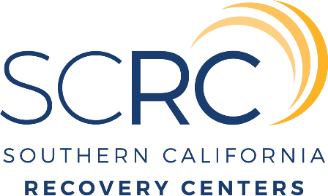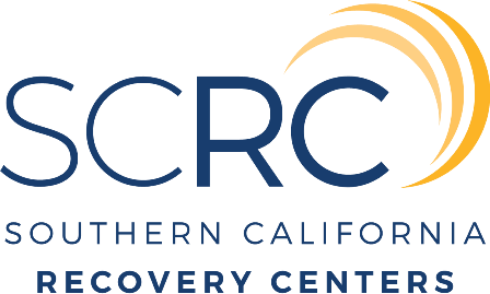Opening the Path to Healing
Understanding Addiction’s Grip
Addiction is a complex condition that traps individuals, pulling them into patterns of behavior that are difficult to break free from. It affects the brain and body, invading one’s daily life and impacting relationships, work, and health. Recognizing addiction’s clutch is essential for adequate recovery. It’s an intricate interplay of genetic, psychological, and environmental factors. The journey to sobriety often requires a multifaceted approach to untangle these pervasive roots and secure proper recovery.
Understanding addiction and recovery is about confronting the personal and structural obstacles that maintain the cycle of addiction. Victims are not weak; they’re trapped in an overwhelming cycle of reliance that demands therapeutic intervention and compassionate care. This is why Southern California addiction recovery centers focus on providing tailored, innovative solutions to address individual needs. How Southern California Recovery Centers Revolutionized Sobriety
The Quest for Holistic Recovery
As addiction weaves itself into every aspect of a person’s life, addressing it requires more than just the cessation of drug or alcohol use. Holistic recovery seeks to heal the whole person, encompassing emotional, physical, and mental health. Southern California Recovery Centers integrate life skills training, therapy, and vocational support as part of their comprehensive recovery programs. These elements ensure that clients aren’t just surviving but thriving as they rebuild their lives from the ground up.
This holistic philosophy embraces trauma-focused care approaches, recognizing past experiences’ impact on current behaviors. By utilizing a variety of therapeutic methodologies, including drug treatment methodologies, clients receive support tailored to their unique circumstances. This approach represents a paradigm shift in how we view and treat addiction, acknowledging that sobriety must harmonize body, mind, and spirit.
Introducing EMDR: A Game Changer in Trauma Therapy
Eye Movement Desensitization and Reprocessing (EMDR) is revolutionizing treatment within trauma therapy, offering newfound hope to those seeking recovery. This evidence-based method harnesses the brain’s inherent healing capabilities, akin to processes that occur during rapid eye movement sleep. By focusing on disturbing memories, EMDR facilitates processing and integration, diminishing their potency and impact.
Trauma often underpins substance abuse disorders, making EMDR a vital tool in addiction recovery. Addressing past traumas is essential to dismantle the maladaptive beliefs and behaviors that fuel addiction. EMDR’s role in addiction recovery cannot be underestimated, as it aids clients in achieving mental clarity, emotional resilience, and a brighter outlook on life. Together with other therapeutic modalities offered in Southern California, such as Cognitive Behavioral Therapy, these strategies merge to provide a robust, multifaceted approach to healing.
Unpacking EMDR: Shifting Paradigms in Treatment
Eye Movement Desensitization and Reprocessing Unveiled
EMDR, or Eye Movement Desensitization and Reprocessing, stands as a breakthrough in addiction recovery treatment. It provides a fresh, scientifically-backed method to address underlying trauma that often coexists with substance dependency. This therapeutic approach is designed to reprocess distressing memories by stimulating the brain’s natural healing mechanisms, mirroring the vital processes occurring during REM sleep. EMDR is crucial as it helps clients process traumatic memories more adaptively, effectively bridging the gap between the past and present. It catalyzes personal breakthroughs, paving the way for long-term recovery, especially within the innovative Southern California addiction recovery centers.
EMDR transcends traditional talk therapy by incorporating bilateral stimuli, such as guided eye movements, to unlock traumatic memories. As these memories are reprocessed, their negative influence diminishes, allowing for emotional trauma resolution. This unique method not only aids in trauma recovery but also strengthens emotional resilience and cognitive clarity. For many, this results in significant strides toward sobriety, highlighting why EMDR is considered a game-changer within addiction recovery paradigms.
Therapeutic Mechanisms: How EMDR Works
In EMDR therapy, clients engage with uncomfortable memories while concurrently focusing on external stimuli, such as therapist-directed eye movements. This dual-focus model lessens the emotional charge associated with traumatic memories, promoting neural reprocessing. This process is grounded in the Adaptive Information Processing model, which posits that negative memories can alter neural networks when inadequately processed. EMDR corrects this by fostering new, adaptive associations.
The transformative power of EMDR lies in its structured approach across its eight-phase protocol, encompassing client assessment, stabilization, targeting traumatic memories, and future planning. Each session is tailored to individual needs, accommodating specific triggers and responses and facilitating holistic recovery. This comprehensive therapy offers profound insights into one’s habitual patterns, paving pathways for constructive self-awareness and behavioral change. The nuanced mechanisms of EMDR position it at the forefront of Cocaine addiction therapy in California, making it a vital component in the journey to recovery.
Why Trauma Therapy Matters in Addiction Recovery
Trauma and addiction are deeply intertwined, often perpetuating a cycle of self-destructive behavior. Understanding and addressing trauma is critical, as it frequently underlies substance use disorders. Trauma therapy, particularly EMDR, offers clients the opportunity to confront and resolve past traumas, providing psychological relief and laying a foundation for lasting sobriety. It mitigates the harmful coping mechanisms established by trauma, promoting healthier patterns of thought and behavior.
Incorporating EMDR into addiction recovery programs allows for a targeted approach to dismantling trauma-induced addiction triggers. How to Achieve Drug Recovery in South California? This method is essential, as unresolved trauma can compromise recovery efforts, leading to relapse. By treating trauma directly, EMDR addresses the root causes of addiction rather than merely its symptoms. This holistic healing strategy is reflected throughout Southern California Recovery Centers, where comprehensive care ensures treatment extends beyond immediate addiction symptoms to foster enduring personal growth and mental wellness. The Dana Point area addiction recovery integrates trauma-informed care, reinforcing the significance of tailored therapeutic interventions in achieving and maintaining sobriety.
Integrating EMDR in South California’s Recovery Landscape
Pioneering Approaches in Dana Point and Carlsbad
Southern California’s Addiction Recovery Centers are leading the charge with pioneering EMDR techniques in Dana Point and Carlsbad. These areas are known for their optimistic and innovative approaches to addiction therapy. Advanced EMDR methods are being introduced to dismantle deep-seated trauma affecting individuals. Clients benefit from state-of-the-art facilities, such as those in Dana Point treatment facilities, which provide an idyllic environment for healing and self-discovery. Here, EMDR is meticulously integrated into programs that are set against the backdrop of California’s serene landscapes, allowing clients to attain therapeutic breakthroughs in a supportive and nurturing setting.
The Carlsbad treatment centers employ a blend of traditional and cutting-edge practices to ensure comprehensive care. Known for their versatility, these centers address various substance dependencies. EMDR is seamlessly incorporated, reinforcing Carlsbad’s reputation for effective rehabilitative methods. This vibrant region fosters an empowering atmosphere, galvanizing clients on their journey to recovery. By tapping into Carlsbad’s diverse resources, treatment programs elevate client recovery pathways, incorporating therapeutic modalities that evolve alongside scientific advancements. Carlsbad rehabilitation options are renowned for fostering change through innovation, providing vital support for a sustainable recovery.
Tailored Outpatient Programs for Men
At the forefront of Southern California Recovery Centers, our dedication to men’s recovery is evident in our tailored outpatient programs. These programs are specifically designed to address the unique needs and challenges faced by men in addiction recovery. A critical component of this approach is our robust EMDR therapy sessions, which are integral in processing trauma and cultivating personal resilience. By embracing a male-centric perspective, we empower clients to confront vulnerability and transform it into strength. Each program element, from therapy sessions to vocational training, supports the men’s journey to reclaim their lives and build a future grounded in sobriety.
The commitment to Men’s Outpatient Programs extends beyond traditional frameworks. We adopt a holistic approach, integrating life skills and vocational training to fortify each man’s post-treatment success. Our acclaimed therapy team facilitates consistent, personalized care, ensuring clients benefit from continuity and familiarity throughout their recovery. Essential therapeutic elements, including Men’s addiction treatment programs, are woven seamlessly with EMDR practices, paving the way for long-lasting change and self-discovery within a cohesive and structured framework.
EMDR’s Role in Comprehensive Drug and Alcohol Treatment
EMDR is pivotal in the diverse landscape of drug and alcohol treatment, driving profound shifts in clients’ recovery journeys. By addressing the underlying traumas often linked to addiction, EMDR enables clients to reprocess harmful memories safely. Its adaptive framework promotes healing, fostering a transformation in thoughts and behaviors. Integrated within Southern California Recovery Centers, EMDR complements various treatment modalities, ensuring comprehensive support for those overcoming addiction.
The nuanced application of EMDR within drug and alcohol treatment redefines recovery possibilities for many individuals. By confronting trauma head-on, EMDR amplifies traditional alcohol treatment methods. It empowers individuals to liberate themselves from addictive patterns driven by unresolved emotional pain. This synergy is particularly effective in addressing complex addiction profiles, including cocaine and fentanyl dependence. EMDR’s holistic influence enhances the therapeutic resilience required for lasting sobriety, cementing its role as a cornerstone within the extensive array of treatment services offered in the vibrant context of Southern California’s addiction recovery centers.
Tailoring EMDR for Unique Client Profiles
Veterans and Active Duty Military: Specialized Care
Veterans and active duty military personnel face unique challenges when addressing addiction, often intertwined with trauma from service. Tailoring EMDR for these individuals involves specialized care that acknowledges their distinctive experiences and needs. At Southern California Recovery Centers, the EMDR techniques are adapted to resonate with the specific trauma profiles prevalent in military life. Veterans Day Resilience: Recovery Success Stories This personalized approach aids in processing service-related stressors, promoting mental resilience. The incorporation of trauma-informed care ensures that veterans receive compassionate, practical support, fostering sustainable recovery.
Veterans struggling with addiction will find that treatment paths are imbued with an understanding of military culture and its psychological impacts. These paths, enhanced with therapies like EMDR, emphasize belonging and understanding, which are critically crucial for reintegration and healing. The Veteran’s addiction treatment paths provided by Southern California Recovery Centers embody this comprehensive, empathetic approach, ensuring that every veteran and active military member transitions smoothly toward sobriety.
Guiding CEOs and Leaders Towards Recovery
For CEOs and leaders, addiction recovery often intersects with immense work pressures and high expectations. Executives require rehabilitation programs that respect their responsibilities while providing profound therapeutic interventions. Southern California Recovery Centers strategically integrates EMDR into recovery plans tailored for corporate leaders, emphasizing both professional continuity and healing. With CEO rehabilitation support programs, executives can manage complex emotional landscapes, utilizing EMDR to reshape stress responses and fortify mental wellness. Recovery Support for CEOs in South California
The distinctiveness of these programs lies in their balance between therapeutic depth and functional practicality. Leaders learn to navigate life’s demands without substance reliance, promoting healthier work-life dynamics. This blend of accountability and support is pivotal in transforming addiction paradigms for those in leadership. Through tailored interventions like CEO rehabilitation support programs, Southern California Recovery Centers offer executives a pathway to reclaiming their lives while enhancing their professional prowess.
Support for Younger Generations: 20s and 30s
Effective recovery strategies for individuals in their 20s and 30s must consider the unique pressures and transitional life stages characteristic of this demographic. The Southern California Recovery Centers’ programs emphasize agility and relevance, integrating EMDR as a tool to address youthful anxieties and formative traumas contributing to addiction. EMDR helps younger clients navigate through personal histories to develop resilience and self-awareness. Achieving Sobriety: Tips for People in Their 30s
Recovering from addiction in their 20s requires an approach that embraces the energy and potential of youth while offering concrete tools for transformation. Southern California Recovery Centers provides a framework that nurtures holistic growth and independence. By reinforcing self-efficacy, these young adults are empowered to construct their future on a sturdy foundation of sobriety. The Recovering from Addiction in Their 20s initiative tailors interventions to foster long-term recovery, ensuring that each individual’s journey is celebrated and supported.
EMDR Synergy with Other Therapeutic Approaches
Combining EMDR with Cognitive Behavioral Therapy
Combining EMDR with Cognitive Behavioral Therapy (CBT) offers a powerful strategy for addiction recovery. This therapeutic alliance blends EMDR’s rapid trauma processing with CBT’s structured approach to behavior modification. Clients benefit from the dual impact, gaining insights into past trauma while learning practical coping strategies. At Southern California Recovery Centers, this synthesis caters to various addictions, fostering resilience against habits grounded in trauma. With each session, clients can untangle deeply embedded beliefs and replace them with adaptive thought patterns, empowering their journey toward sobriety.
This integrative method is especially beneficial for those grappling with complex psychological issues where trauma is intertwined with cognitive distortions. By understanding EMDR for addiction recovery, clients see a marked improvement in emotional stability and self-control. The synergistic effect heightens treatment efficacy, making it a cornerstone of comprehensive recovery efforts where mental clarity and emotional balance are the goals.
Enhancing Healing with Somatic Experiencing
Somatic Experiencing, a body-oriented therapy addressing trauma’s physical manifestations, complements EMDR to deepen healing. This approach recognizes that trauma often gets stored in the body, influencing behavior and emotional responses. Southern California Recovery Centers incorporates Somatic Experiencing to help clients release this stored energy, fostering a holistic recovery process. Clients gain body awareness, learn to regulate their physical responses, and thereby dismantle stress patterns contributing to addiction.
By integrating Somatic Experiencing, the healing journey extends beyond the mind, embracing the body’s wisdom. This dual focus accelerates recovery, particularly for clients with trauma-induced addictions. The program ensures that individuals are not only mentally equipped to handle life’s challenges but also physically resilient. As a result, their combining therapies for recovery leads to lasting change as they develop nuanced self-regulation techniques that work in harmony with EMDR’s transformational capabilities.
The Seeking Safety Model in Trauma-Informed Care
The Seeking Safety model is integral to trauma-informed care, mainly when used alongside EMDR. This evidence-based practice provides coping skills to manage emotional pain without resorting to substance use. It emphasizes safety in thought, emotion, and action, a crucial aspect in nurturing self-care and decision-making. Within Southern California Recovery Centers, Seeking Safety complements EMDR, offering a scaffold that supports clients through challenging emotional times, reinforcing the therapy’s impact.
Together, Seeking Safety and EMDR create a robust framework for clients, helping to identify harmful patterns and replace them with healthier alternatives. This model provides immediate tools for stability while EMDR works through deeper-seated traumas. The dual emphasis on safety and processing enhances a client’s ability to maintain sobriety long-term. EMDR’s integration with Seeking Safety ensures that each step toward healing is supported and sustainable, establishing a haven where recovery flourishes.
Continuity and Structure: Cornerstones of Recovery
Life Skills and Vocational Training in Sobriety
Recovery is more than overcoming substance dependency; it’s about developing life skills that bolster self-sufficiency. At Southern California Recovery Centers, these skills are integrated into every treatment plan, underpinned by vocational training tailored to individual interests and strengths. This commitment ensures clients acquire not only the tools necessary for sobriety but also the capabilities to thrive in everyday life. Cultivating responsibility through structured activities instills confidence, turning past vulnerabilities into present strengths.
By nurturing these abilities, the centers provide a launchpad for sustainable recovery, empowering men with the knowledge and hands-on experience required to rebuild their lives. With access to resources that enhance vocational competencies, individuals can pursue meaningful employment, reinforcing their independence and commitment to sobriety. This holistic approach emphasizes the importance of continuity in care, ensuring that recovery paths align with personal and professional growth aspirations.
Structured Daily Living for Lasting Change
Structured daily routines form the backbone of sustained recovery, instilling discipline and promoting accountability. Southern California Recovery Centers highlight the importance of daily structure within their programs, creating an environment conducive to personal development. By establishing regular activities, including therapy sessions and community involvement, clients learn to manage their time effectively, reducing the risk of relapse triggered by idle moments.
The focus on consistency nurtures a mindset of reliance and stability, central to recovery from substance abuse. As clients progress through their structured schedules, they cultivate habits and routines that reinforce a lifestyle devoid of dependency. This structure not only instills responsibility but also plays a critical role in acclimatizing individuals to life post-rehabilitation, where autonomy and self-management are paramount.
Reintegrating into Society with Purpose
Reintegration into society represents a pivotal phase in addiction recovery, marked by both opportunities and challenges. Southern California Recovery Centers provide tailored support to ensure clients transition smoothly back into their communities. This includes fostering connections with support networks and offering guidance on how to apply newfound skills and insights practically.
By addressing potential obstacles collaboratively, the centers empower individuals to navigate societal reentry with confidence and clarity. Social reintegration strategies include personalized career planning and community engagement initiatives, encouraging clients to contribute positively to their surroundings. This focus on purposeful engagement cements the recovery journey, enhancing life satisfaction and fortifying clients against future challenges, thus paving the way for enduring sobriety.
Prescription pill rehabilitation help is also seamlessly integrated into this holistic approach, ensuring comprehensive support for varied addiction profiles.
EMDR: Transformative Outcomes in Addiction Recovery
Why EMDR is Effective for Heroin and Cocaine Addiction
Eye Movement Desensitization and Reprocessing (EMDR) has proven transformative for individuals grappling with heroin and cocaine addiction. Its efficacy lies in its ability to unravel the deep-seated trauma often entangled with these severe substance dependencies. Within the framework of Heroin treatment in California, EMDR stands out as a cornerstone therapy, offering clients a profound pathway to unravel their addiction’s roots. At Southern California Recovery Centers, the dual approach of EMDR coupled with personalized care plans empowers individuals to rewrite their emotional and cognitive narratives, thus facilitating a shift towards sobriety.
EMDR’s targeted methodology addresses the neural pathways that have been altered by addiction, helping to rewire the brain’s responses to triggers. This process aids in diminishing cravings and reducing relapse risks, paving the way for sustained recovery. It’s through such attentive therapeutics that clients discover newfound resilience, reshaping their self-conception away from the shackles of addiction. By focusing on emotional clarity and wellness, EMDR opens the door to long-lasting liberation from heroin and cocaine dependency.
Alongside EMDR, programs in Carlsbad and Dana Point employ comprehensive support structures to maintain momentum in recovery. Clients experience holistic healing environments designed to foster peace, balance, and self-discovery through innovative therapies. Integrating technology and tradition, these centers prioritize individual healing journeys, ensuring that each client’s unique needs are respected.
Addressing Prescription Pill Dependency with EMDR
Prescription pill addiction presents distinct hurdles, often rooted in both physical and psychological pain. EMDR therapy rises to these challenges by focusing on the trauma and stress factors that drive reliance on prescription medication. Within the advanced framework of Southern California Recovery Centers, EMDR helps clients process underlying issues and dependencies uniquely associated with prescription pills, fostering a healthier mental state.
The usage of EMDR in this context centers around reprocessing maladaptive memory patterns that sustain addiction, thus enhancing clients’ ability to cope without substance reliance. Unlike more traditional methods, EMDR addresses these entrenched patterns head-on, allowing individuals to confront and dissolve their dependence. This robust approach underpins the therapy, empowering clients to reclaim control and achieve sobriety.
Furthermore, clients benefit from a collaborative treatment framework that encompasses expert therapy, structured routines, and proactive life skills development. Through a mixture of EMDR techniques and a supportive community, individuals engage in a treatment journey that respects their past experiences while encouraging future growth and independence.
EMDR’s Role in Mitigating Relapse Risks
EMDR therapy plays a critical role in reducing relapse risks, embodying a proactive approach to addiction recovery. By helping clients process traumatic memories, EMDR decreases the likelihood of self-destructive behaviors re-emerging during distressing times. As part of the multifaceted addiction treatment plans offered at facilities like Southern California Recovery Centers, EMDR bolsters emotional resilience, enabling individuals to confront stressors effectively.
The EMDR process equips clients with emotional regulation and cognitive resilience skills, essential components in maintaining long-term sobriety. It not only addresses past trauma but also prepares individuals for future challenges, ensuring that sobriety is maintained amidst life’s inevitable fluctuations. This comprehensive approach underscores EMDR’s pivotal role in relapse prevention, highlighting its value as a fundamental element of effective addiction recovery.
To complement EMDR, programs incorporate ongoing vocational training and life skills support, reinforcing clients’ abilities to navigate life post-treatment. By integrating EMDR with structured, everyday tools, recovery centers provide a steadfast foundation for participants, encouraging them against potential relapse triggers. This synergy safeguards recovery progress and maintains the momentum required for sustainable change.
Charting a New Course: The Future of Addiction Therapy
Innovations on the Horizon for Healing
The landscape of addiction therapy is ever-evolving, with innovative treatments continuously emerging. Integrating new technologies and therapies promises to transform how recovery is approached, offering more personalized and practical solutions. In Southern California, recovery centers are at the forefront of these advancements, ensuring that their clients receive the most cutting-edge care. Advances in neurotherapy and genetic research are providing insights into addiction that were previously unimaginable. These breakthroughs, combined with proven modalities like EMDR, are setting the stage for a future where healing is not only possible but probable.
Digital interventions and virtual reality therapies are beginning to find their place in addiction recovery programs. These tools offer immersive experiences that can simulate real-world scenarios, equipping individuals with practical coping strategies. Moreover, data-driven approaches allow for more tailored treatments, enhancing the efficacy of programs across the board. This convergence of technology with traditional therapy paradigms is a beacon of hope, pointing toward a reality where recovery is both sustainable and accessible.
The Evolving Role of Trauma Therapy in Rehab
Trauma therapy is increasingly recognized as a critical component of effective rehabilitation strategies. As understanding deepens about the relationship between trauma and addiction, therapies such as EMDR are more integrated than ever in recovery programs. Southern California Recovery Centers have long been a leader in this domain, championing trauma-focused care approaches to address the root causes of addiction.
The evolution of trauma therapy in rehab encompasses not just identifying past traumas but crafting treatment plans that build resilience and emotional fortitude. By addressing trauma directly, individuals can dismantle the psychological barriers that have perpetuated their addiction. As such therapies continue to develop, they embody a more holistic view of health, embracing both mental and physical wellness. These methods reflect an understanding that healing must occur at all levels-psychological, behavioral, and emotional.
Empowering Clients in Their Recovery Journey
Empowerment stands at the core of contemporary recovery models, emphasizing the client’s role in their healing journey. The focus is shifting from traditional top-down approaches to more collaborative methods that include client input and feedback. At Southern California Recovery Centers, this empowerment is woven into the fabric of their programs, encouraging clients to take active roles in their recovery paths.
Personal development and self-efficacy are cultivated through a combination of therapy, life skills, and vocational training, ensuring that individuals are equipped to face life outside the treatment center. This empowerment extends beyond sobriety, enabling clients to redefine their identities and purpose. By fostering an environment where individuals are their advocates, the recovery journey transforms from a linear process to a dynamic path of self-discovery.
Ultimately, this empowered approach underscores the commitment to nurturing not just sobriety but a fulfilling, purposeful life post-treatment. As addiction treatment evolves, embracing client empowerment will remain critical, aligning with the broader movement toward holistic, client-centered care. This strategic focus ensures enduring recovery and a robust support system that can endure the inevitable challenges life presents.
Frequently Asked Questions
Question: How does EMDR therapy benefit individuals seeking addiction recovery at Southern California Recovery Centers?
Answer: EMDR, or Eye Movement Desensitization and Reprocessing, offers significant benefits for clients at Southern California Recovery Centers by addressing the root causes of addiction through trauma therapy. The process involves reprocessing traumatic memories, thereby diminishing their power and influence over addictive behaviors. This approach not only aids in resolving past traumas but also promotes emotional resilience and mental clarity, which are essential for sustained sobriety. EMDR’s integration into our comprehensive addiction treatment programs, including those offered in Dana Point and Carlsbad, provides individuals with a robust framework for overcoming addiction and achieving lasting recovery. Explore the Ultimate Guide to Sobriety for Men in Carlsbad.
Question: Can you explain how EMDR is integrated into men’s outpatient programs at your South California addiction centers?
Answer: At Southern California Recovery Centers, we pride ourselves on offering specialized men’s outpatient programs that incorporate EMDR extensively; check out The Benefits of Male-Only Recovery Centers. Our programs are tailored to address the unique challenges men face in addiction recovery, such as trauma and emotional resilience. The Benefits of Male-Only Recovery Centers. EMDR is used alongside other therapeutic modalities, including cognitive behavioral therapy and vocational training, to ensure holistic addiction recovery. The therapy sessions aim to empower men by transforming vulnerabilities into strengths, allowing them to rebuild their lives with confidence and purpose.
Question: How does the use of EMDR in your programs cater to veterans and active-duty military personnel?
Answer: Veterans and active duty military personnel often face unique challenges due to trauma experienced during service. At Southern California Recovery Centers, EMDR is tailored to resonate with these specific trauma profiles, promoting mental resilience and healing. Our trauma-informed care approach ensures that veterans and active military receive compassionate, practical support tailored to their needs. By integrating EMDR with other support mechanisms, such as life skills training, we help these individuals find sustainable recovery and reintegrate into society with confidence. Veterans Day Resilience: Recovery Success Stories
Question: What role does EMDR play alongside other therapeutic approaches in addiction recovery?
Answer: EMDR is seamlessly integrated with various therapeutic approaches at Southern California Recovery Centers to enhance the overall efficacy of addiction treatment; see more on Comparing Inpatient and Outpatient Care in South California. By combining EMDR with therapies like cognitive behavioral therapy and somatic experiencing, we address both the psychological and physical manifestations of trauma. This multidimensional treatment strategy leverages EMDR’s rapid trauma processing capabilities alongside structured behavior modification techniques, providing clients with comprehensive tools for achieving and maintaining sobriety.
Question: What makes Southern California Recovery Centers stand out for those interested in the role of EMDR in addiction recovery, as discussed in the blog ‘Exploring the Role of EMDR in Addiction Recovery Today’?
Answer: Southern California Recovery Centers stands out for its commitment to integrating cutting-edge therapies like EMDR into comprehensive addiction recovery programs. With 13 years of excellence, we provide tailored treatment plans that include expert EMDR therapy, ensuring clients receive the most effective support for overcoming addiction. Our focus on vocational training and life skills development, alongside trauma-informed care, addresses the multifaceted nature of addiction, offering individuals a profound path to healing and long-term sobriety. Our dedication to continuity of care and personalized treatment makes us a trusted choice for those seeking to explore EMDR’s transformative potential in addiction recovery.





